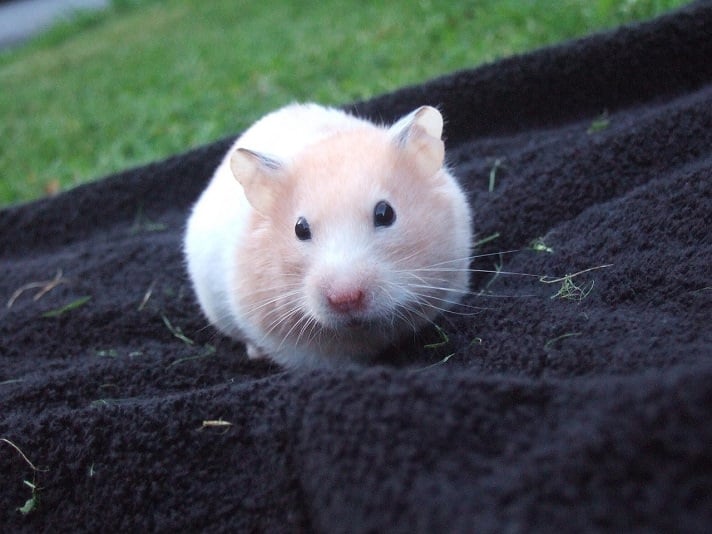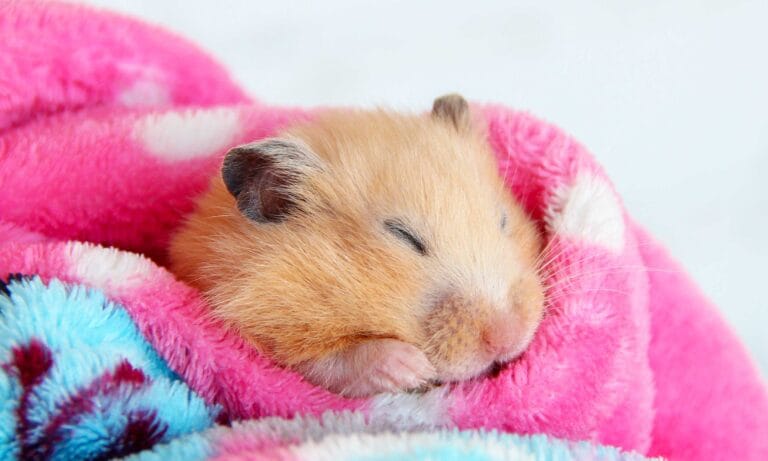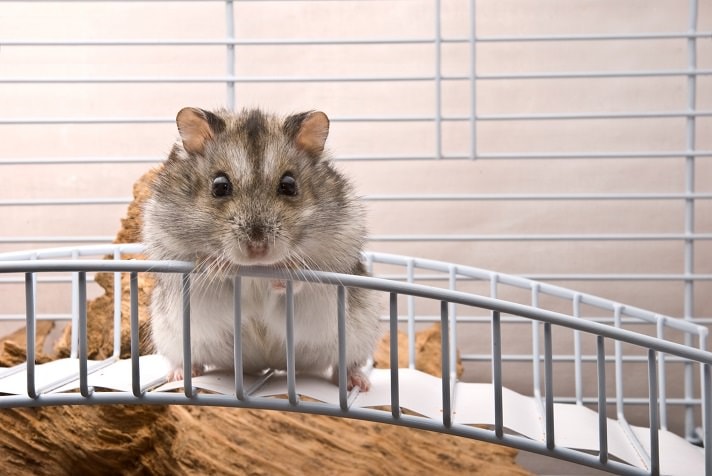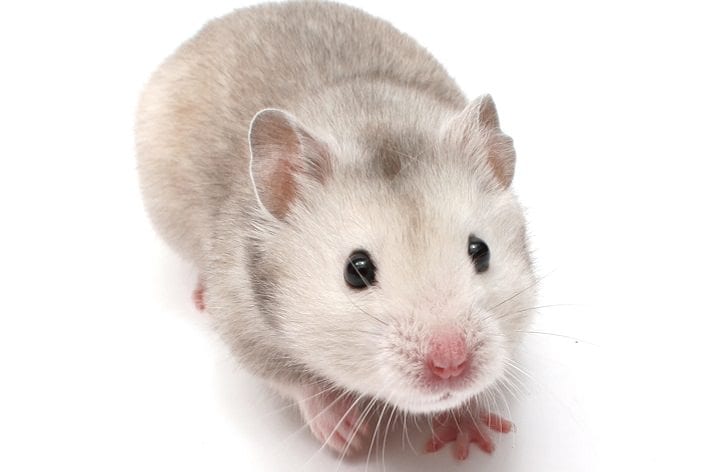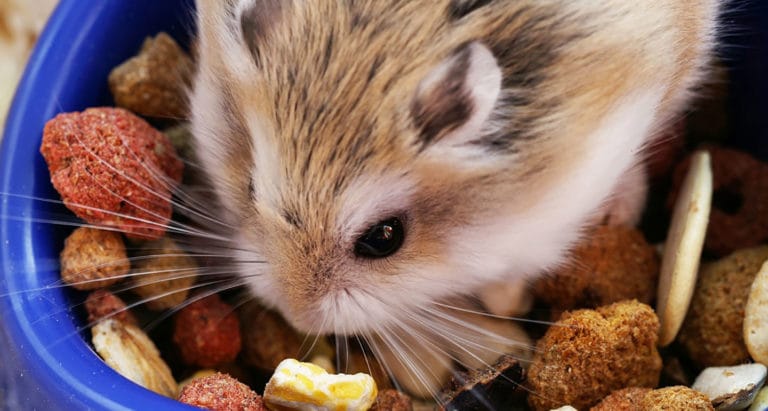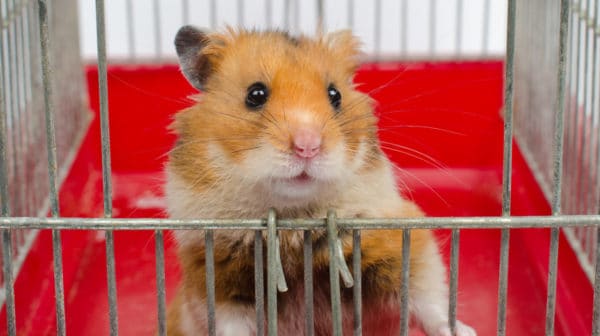Q.
We have had three hamsters die in the past year for no known reason. We thought the first one died of loving it to death. It lived for only nine months. We loved the other two as much but were more careful about the treats, but they lived for a shorter time. They all seemed to have about the same symptoms at death, and we just held them until they stopped breathing. These were our 11-year-old grandson’s, whose heart is so full of love for these sweet critters. He has asked our son if he can have another one for his birthday. His dad explained that he must be sure, as it is possible to have heartache again (for Dad also, as he has to bury the pet, and Grandpa makes the coffin, which is also painful). Our son had hamsters when young; many lived to 4 years and definitely died of old age. What could we all be doing wrong now? We have tried to guess what it is. The last ones only lived two weeks, but they had a love-filled two weeks. Watching and holding them while they are dying is so difficult. We are wondering what the best thing to use each week when we clean the cage would be. I have checked the Internet but find different answers. Is using diluted bleach the best and rinsing well after? What are your suggestions for us?
A.
When we take a living thing into our care, no matter how small, it is a commitment to life itself. Learning to preserve and protect a life even smaller and more vulnerable than their own is one of the most valuable lessons a child can learn, and it can shape their entire adulthood. So your concern is very appropriate. Let’s learn what we can from the information you’ve offered.
There’s no order to the factors to consider, they all carry similar weight. The first that arises is the source of the hamsters. Because hamsters and other rodents are so prolific and short-lived, the euphemism “kid’s pet” is often wrongly used to describe them, and there is little advocacy for investigating how to preserve their lives. I urge people to look to conscientious private breeders to acquire their pets. The research takes time, and you might have to travel, but the result might be a healthier pet that will enjoy a longer life.
Your first suggestion of a possible cause of death was “loving” too much. The sentiment is easy to understand, but the only detail you mention is “treats,” so I’m going to guess that you’re suggesting that diet might have played a part. Yes, it’s possible, from three main factors: contamination, spoilage or malnutrition. A fourth factor, overweight, is as lethal, but wouldn’t have as immediate an impact.
Hamsters need a good, balanced mix of seeds and grains as a base food mixture. If the hamster’s fed by occasionally refilling his food supply with the same mixture, he may take only what he is most attracted to, ignore more healthful foods, and, unbeknownst to the caregiver, be starving himself of essential nutrition. Removing and replacing the hamster food supply daily — basically, what’s left in the dish — is a critical part of good hamster care. Hamsters will also live longer with a regular supply of fresh foods. These must also be removed and replaced regularly, as they may spoil and lead to fatality from gastrointestinal disease.
The next factors to consider are all environmental. First, what sort of substrates were the hamsters placed on? Cedar is reported to be harmful to animals. Any bedding with a high phenol content can be harmful to small pets. And any substrate can become contaminated with mold. Likewise all substrates must be changed weekly to avoid toxic ammonia buildup.
With regard to what is used to clean hamster cages and the immediate environment, if performed regularly and rigorously, cage cleaning need not involve a lot of harsh chemicals. Diluted bleach and white vinegar are inexpensive and can be effective for certain jobs, but may be a bit strong if overused, and by themselves lack the surfactant properties that are also useful in ridding animal environments of bacteria. There are many pet-safe products available, and they usually say so on the label. The best of them help remove visible stains, invisible pathogens and rinse away without leaving scent or residue. Long-term rodent caregivers tend to reserve bleach for limited use, and allow the dwelling to dry for a very long period before returning animals to it afterward. Milder cleansers and “elbow grease” are recommended for weekly use.
But there may be fumes coming from somewhere else in the environment. I’d look at where the hamsters’ dwellings have been situated. Were they downwind of a boiler or stove, and could carbon monoxide have played a part in their demise? Was it occasionally drafty? Hamsters are particularly susceptible to these things because of their super-sensitive olfactory functions, which leave their respiratory system especially vulnerable. How about light and noise? Were there other pets nearby that might have put unusual stresses on the hamsters? Was the cage located where it was at the center of bustle and activity? These things are all rare factors in themselves, but we’re looking for an overarching reason for consecutive hamster deaths after a short duration, so we must also look at the accumulation of factors as a cause.
In the end I can offer you no satisfying certainty, except that your evident care and concern are the most important things needed to eventually find the answer, and I cannot praise you enough for those.
By: Martha Boden
Feature Image: 936233/Pixabay
Share:
